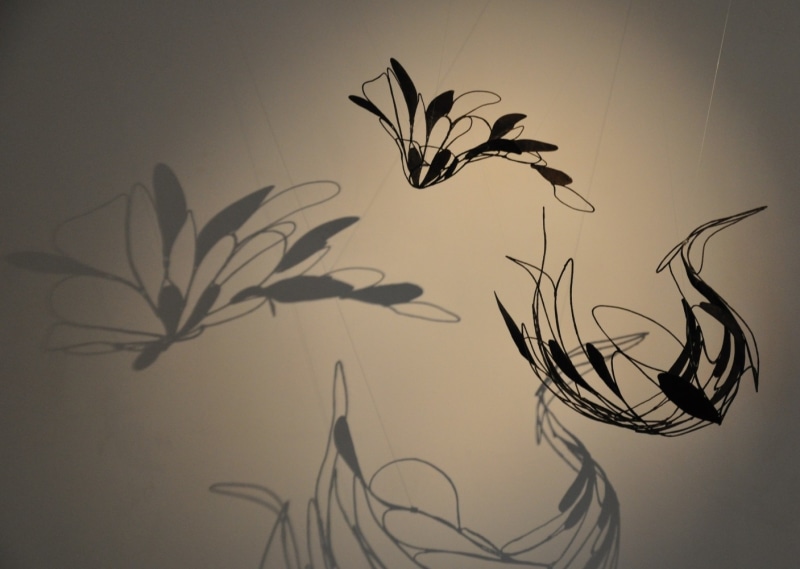
Ranjani Shettar constructs poetic, handmade sculptures that refer to the ancient crafts and natural environment of her home and studio, located seven hours outside of Bangalore in the Indian countryside. Shettar's latest exhibition, which is thoughtfully tailored to the space, presents eight works consisting of multiple parts: The first room contains an installation of four suspended sculptures that are similar in form yet vary in color, while the second displays four different wall works that shift in sculpture and scale.
In the main gallery, Bird Song I-IV presents a melodic group of floating abstract forms made from stainless steel armatures wrapped with natural and dyed muslin, which are then dipped in glue made from tamarind kernels, and later covered in lacquer. The sculptures are ambiguous in shape and could be read equally as seeds, flowers, and birds in flight or perhaps badminton shuttlecocks shattered from play. The series, which is dramatically lit for a dance of shadows on the surrounding walls grows progressively darker in color due to the traditional pomegranate skin, areca nut and kasimi dyed applied to the muslin.
Two of the wall sculptures in the back gallery, Harp and Drumbeats employ carved wooden tool handles with the abstract steel-and-muslin forms to lend a utilitarian appearance to otherwise lyrical pieces. Meanwhile, Leap reduces Shettar's process to its essence with its five crimped pieces of circular cloth treated with the tamarind kernel medium. Dealing with organization, connections, space, form, color, and line, Shettar's works are both tactile and filled with wonderment.
-Paul Laster